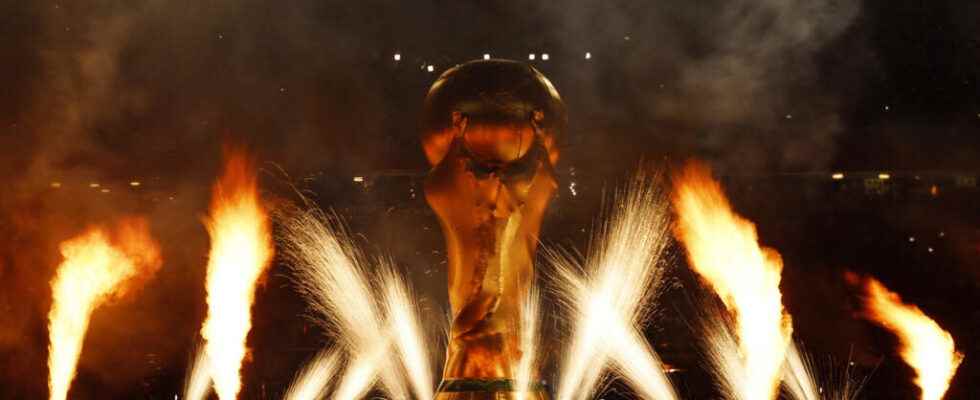The 2022 FIFA World Cup ended on December 18 in Lusail with Argentina’s victory over France. A result that closes a tournament whose organization has been flawless, but not without controversy. A look back at four weeks of competition.
The World Cup 2022 closed on the consecration of Lionel Messi and his partners. The competition was held in Qatar from November 20 to December 18 without major hitches, despite twelve years of controversy on issues of respect for human rights, workers’ rights, of those of LGBTQ+ peopleand environmental issues.
►Also read: Migrant workers in Qatar: “I love football, but I won’t be able to attend the matches”
Four weeks during which Qatar and the International Football Federation (Fifa) have despite everything led drum beating an organization that appears flawless, better in certain logistical aspects (stadiums, transport, etc.) than some recent editions.
A flawless global organization
Welcoming tourists, delegations, the media… The small country of 11,000 square kilometers, as big as Ile-de-France, managed to manage the influx of hundreds of thousands of visitors thanks to an army of some 20,000 volunteers and unprecedented human, technical and financial resources.
The movements of supporters, for example, were made without any significant difficulties, thanks in particular to an ultra-modern metro network commissioned in 2019, and with the omnipresence of staff guiding them with “metro, this way”, “stadium, this way”, “exit, this way”.
►Also read: 2022 World Cup in Qatar: “Metro man”, the young Kenyan who surrounds Doha
Stadiums with variable attendance
Upon arrival, the Fifa Fan Festival drew 1.8 million visitors and the stadiums (officially) drew an average of 53,191 spectators [1] by encounter. Speakers, however, not always full at the kick-off and/or at the final whistle.
►Also read: World Cup 2022: who are the supporters of Qatar, inhabited mainly by foreigners?
These enclosures were often lined with “local” supporters, spectators from South Asia (Bangladesh, India, Nepal, Pakistan, etc.), delighted to be able to witness with their eyes matches with Lionel Messi and Cristiano Ronaldo and who brought a breath of fresh air to this tournament.
Upon arrival, Fifa President Giani Infantino ritually greeted the ” best World Cup in history and describes ” a very, very happy atmosphere “. The drastic but discreet security and using advanced monitoring technologies, as well as upstream sorting work, have prevented the traditional arrival of hooligans and scenes of violence such as those which occurred in France in 1998 for example. A calm accentuated by the absence of alcohol sales near the stadiumsa measure decided at the last minute by Qatar and which caused controversy.
Civilized atmosphere
On the other hand, the usual fervor was far from being there. The atmosphere was very polite. And, apart from around the stadiums on match days, at Souq Waqif and on public transport, it was sometimes difficult to meet foreign supporters, especially Europeans. The latest estimate given by the organizers reports 1.4 million visitors to Qatar. By comparison, 3 million foreigners visited Russia in 2018.
►Also read: News witnesses: World Cup 2022: is it really a party in Qatar?
Boycott of Westerners and/or cost of stay? Some fans had to resort to staying in neighboring countries for lack of affordable accommodation, flying back and forth to Qatar to attend matches. A situation which has thus increased the carbon footprint of an event whose ecological footprint could have been much lower thanks to the exceptional proximity of the eight stages of the competition. This compactness is also the real great positive point of this World Cup and unheard of for a World Cup.
►Also read: Qatar 2022: Germans mostly say they will shun the World Cup
What ecological balance?
Drawing up the environmental assessment of this 2022 edition nevertheless promises to be complex. Especially since some specialized organizations claimed before the kick-off of Qatar-Ecuador, on November 20, that the said balance sheet would be twice as high as the estimates presented by Fifa and the Qatari authorities.
The case of the air conditioning used in the stadiums, when night fell at 5 p.m. in Doha and it was rarely more than 24-25°C in the evening, illustrates the controversy on the subject, even if it uses advanced technologies, according to local authorities. Some players, questioned at the end of the matches, admitted that this air conditioning was more than dispensable for the smooth running of the matches…
[1] Fifa estimates from the Qatar News Agency
